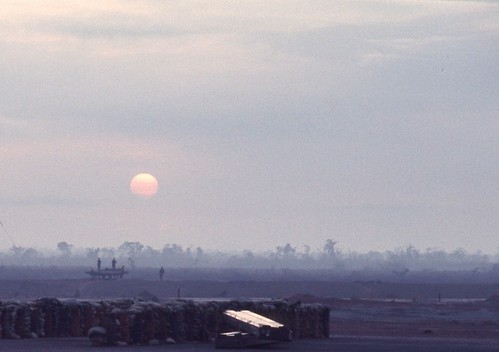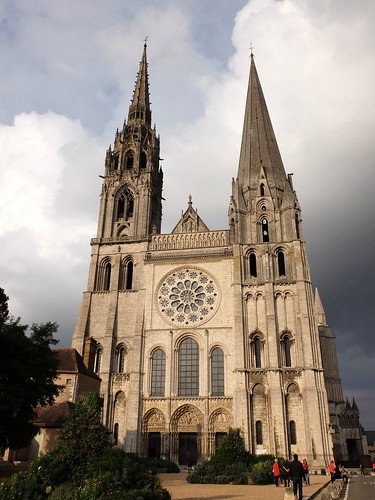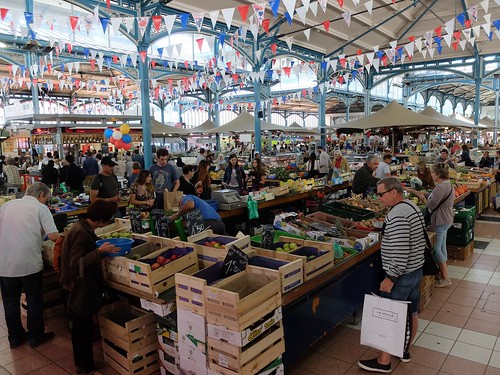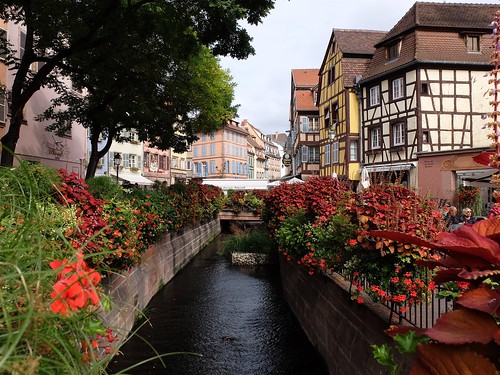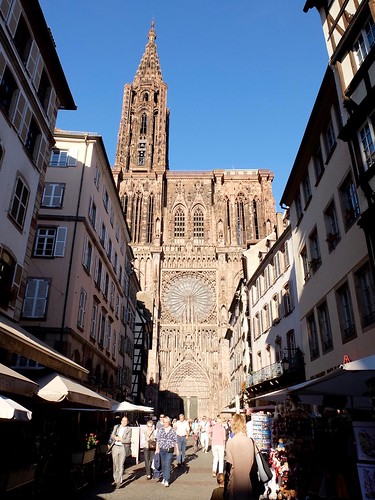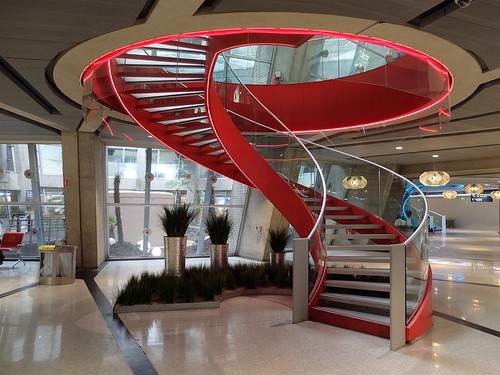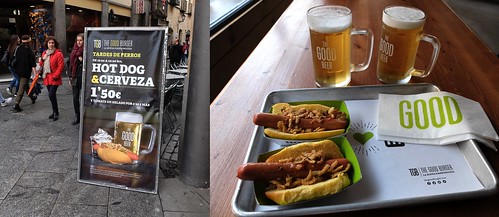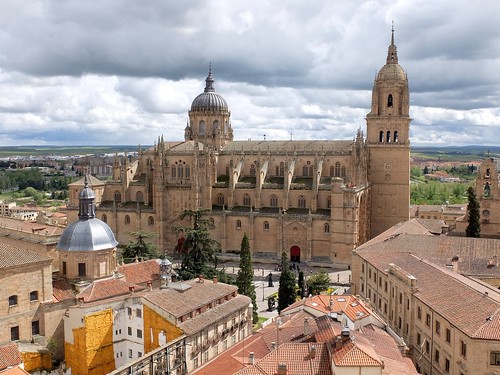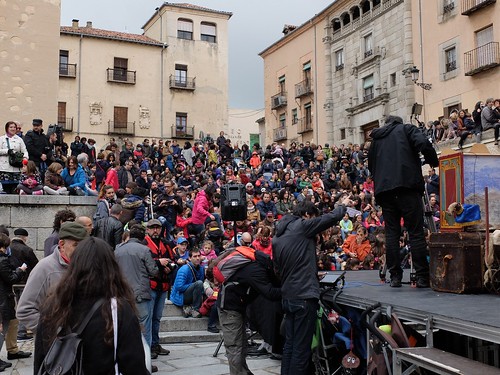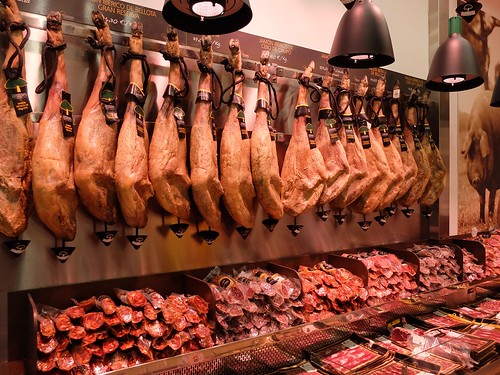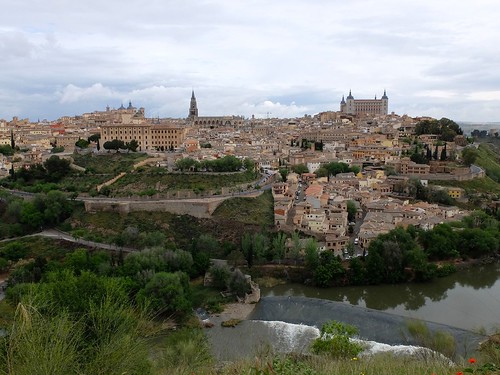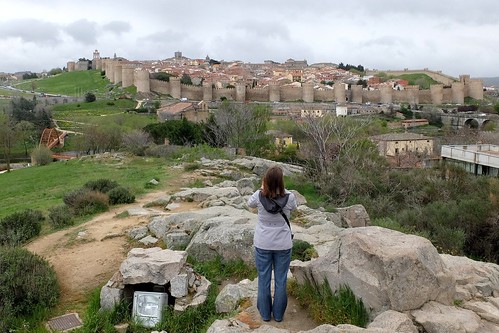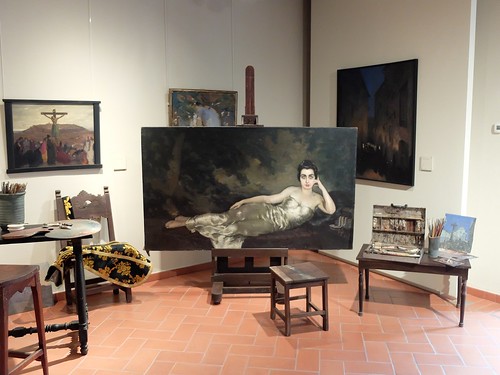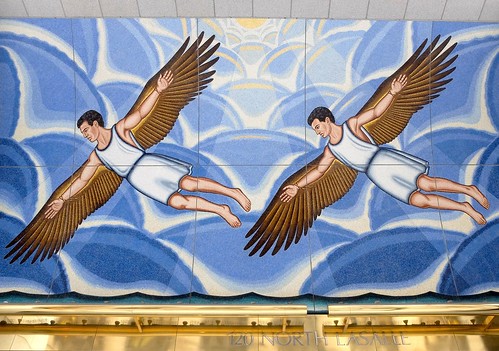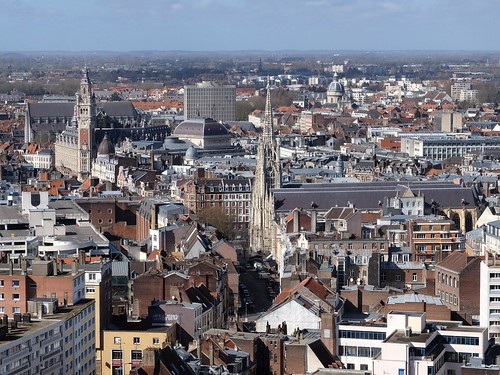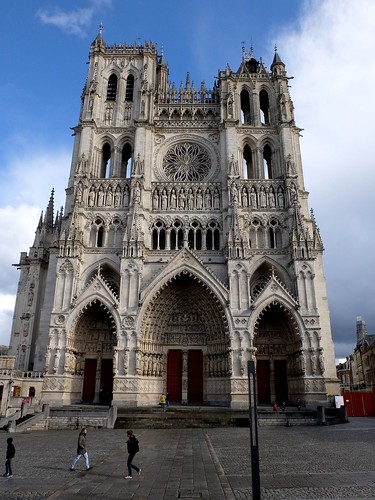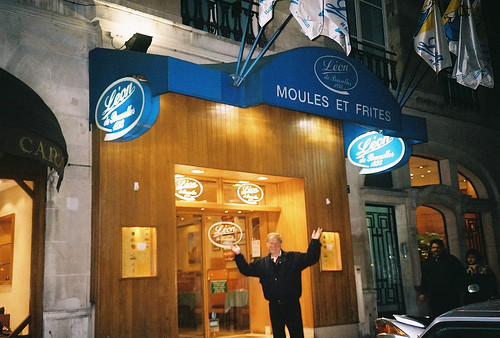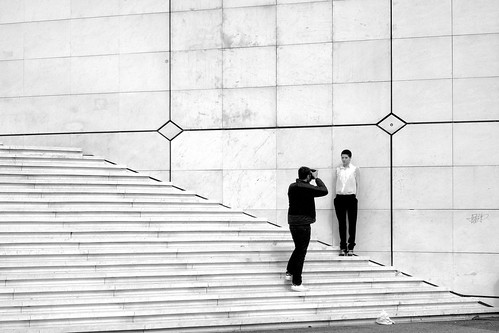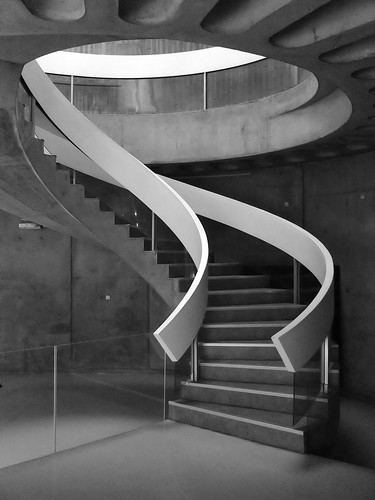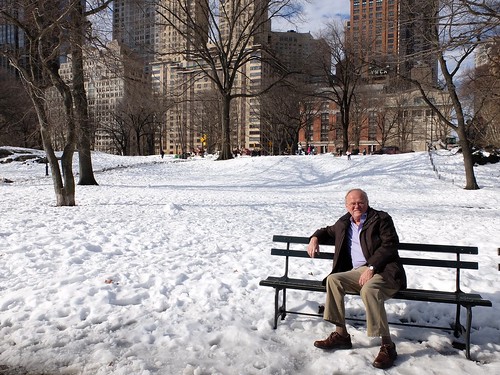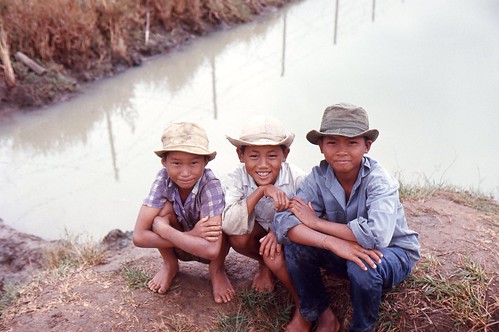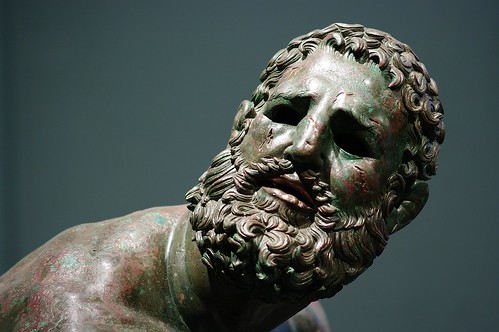We traveled to Andalucía the last two weeks of November, visiting Córdoba, Granada, Ronda, and Sevilla. All in all, a lovely trip, with lots of interesting things to see and eat. Here's the Flickr album with all the snaps:
Thursday, December 22, 2016
Thursday, November 3, 2016
The Last Flight
November 3, 1969, 11 a.m. I was getting close. After 11 months and three weeks, I had only eight more days left in Viet Nam. Helicopters were loud and tempting targets; flying a Huey meant being regularly shot at. I had been in a few scares, seen a lot of the country, the usual ups and downs of a year in a war zone. I was promoted to CW2 the month before and now with over two years service was finally making some real money, almost $500 a month plus flight and combat pay.
In most aviation units, including ours, the tradition was that if you were still alive near the end of your year-long tour of duty, you could have the last week off. So, in another day or two I could coast, stay drunk, wouldn't have to fly, sleep all day, say good-bye to all this crap, go home and eat a real hamburger and some Twinkies and drink a real milkshake.
The Ops Sergeant came by and told me I didn't pull any missions that day. Good. But I'd be the A/C (aircraft commander) on call for night missions, should any come up. Bad. That meant I couldn't drink much. But I was another day closer.
Dull day. Hot. Beginning the boring dry season, same high humidity, high temperature day in, day out, just like August growing up in Galveston and Houston. Listen to some Big Brother, Country Joe, throw in a little jazz. Go to bed early; one, maybe two days left of fretting, then I coast.
After midnight, I get a wake up. I have to fly to Tan Son Nhut, the big base in Saigon, pick up a guy and some equipment, take him to Lai Khe, drop the stuff off, then bring him back to Saigon. Not a big deal, just an oddball little delivery, yet, going up at night, to the Iron Triangle of all places. Shit.
We get the crew together, the ship's already preflighted, crank it. We wake up the tower operator and tell him we're going, if we ain't back in 90 minutes, send help and lots of it. Cleared for take off. Keep it low, a foot or two off the runway as we accelerate to VNE 120 knots, pull the cyclic back hard for a quick climb up to 1500', pull more power to get even higher, be thankful it's one of the new H models. Head for Saigon.
Godawful night flying. Call Bear Cat Arty, the artillery radio net, to find out which way they're shooting. They have fire missions all around the compass, big artillery rounds going every which way. Fly over some, under and around the others, zig zag towards Saigon.
Five miles out, drop down to 500', kill the lights, look out for the usual odd tracer trail from the Saigon suburbs, get clearance to land. A Spec 5 signal technician is waiting with a couple of boxes. We get him on board, take off, head north for Lai Khe, the headquarters of the 1st Infantry Division.
Lai Khe Arty is busy. It takes us an extra 10 minutes to fly around to avoid the artillery, we finally make it in, park our Huey right in front of the dinky little control tower alongside the runway, pitch down and roll the throttle back to idle. The engine stays running, the rotor beating rhythmically overhead. My crew chief helps the Spec 5 unload the boxes from our ship and into a jeep. Be back in 10, the Spec 5 says, hurrying, anxiety in his voice even as he shouts to be heard over the turbine whine. He's obviously more nervous than we are about being here, away from the safety of his home on a big air base.
We sit there, idling, listening to two or three radio channels. They're all fairly quiet except for the traffic on Arty, as they call out updates to their fire missions. It's a pretty, starry night, all things considered.
Long pauses. We hear a distant boom, a boom unlike a friendly howitzer, then the voice of the arty RTO, with a shade more energy in his voice than before. "Be advised Lai Khe has incoming! Incoming!"
Shit. Mortar rounds, rockets, who knows, I can see the stuff hitting far away but moving closer, the bad guys are walking in their shots from the outer berm, looks like they're adjusting the range, aiming for the runway, the tower -- and me. I quickly turn my head and see the Spec 5 jumping out of the returning jeep and running towards the ship. I get on the intercom and tell the crew chief, "Get his ass in now! We are outta here!"
Even before he jumps in I am rolling the throttle up and getting light on the skids. He's in, strapping down, and I pull as much collective as I can grab, push the cyclic forward, and the beautiful new H model with the shiny Lycoming engine vaults into the air as we escape into the safety of the night sky. I make my way out of Lai Khe at a sharp angle from the incoming so we don't fly into it. We get up and away, gain some altitude, turn to Saigon.
It's pushing 3 a.m. by the time we get back to Long Thanh North, gas it up, shut it down, fill out the log, put it to bed and head back to our hooches.
November 4, 1969, 9 a.m. I am catching up on my sleep, all the other crews are out flying, the hooch area is deserted. I get another wake up from the Ops Sergeant. "Mr Wegner, Mr Wegner! Get up, sir, you're leaving! Leaving Viet Nam!"
Yea, right, I think. But he wasn't kidding, I got a drop of a week, going home early, have to leave now, right now. I race around my room, hurriedly throwing stuff in bags, trying not to forget anything. I scooped up my .45 and M-16, chicken plate, classified signals book, tossed it to the sergeant with a plea to check it all back in for me. Luggage in hand, ready to go, I find out all of our ships are gone, I have to hitch a ride on a Huey from another unit that luckily happens to be headed my way.
I'm in a quiet rage. The fucking bastards made me fly on my last day. My last day! I could have been killed, a fucking night mission. No week of taking it easy, no good-bye party, no farewells, nothing. All the guys I had been flying with, living with, for a year, will come back from their missions, walk in, notice my stuff is gone. In another year they'll forget my name, I will forget theirs.
For almost a day I hurry up and wait at some transit barracks with a bunch of people I've never seen before. A few of us are waiting for a flight out, most are just arrived in country. Very few pilots, mostly Infantry lieutenants and Supply officers. For once I am proud of ratty, faded fatigues.
Finally it's time. Get on the bus, head out to the runway, climb the stairway to board the jet. A line of GIs ahead of me, a line behind, I stop at the top of the stairs, turn around and look. I pause, trying to scan it all in, hoping to imprint the scene on my memory forever. Viet Nam. It's over. I made it. I am going home.
The airliner is loaded, every seat taken, the doors are shut, the air conditioning vents are struggling to clear out the tropical heat and moisture, we taxi to the end of the runway, throttles to the wall, we're going, going, going, faster, faster, rotate for take off, wheels up, we head out to sea, to the east, ever closer and closer back to The World.
Sunday, October 16, 2016
Chartres, Dijon, and Alsace
Most guidebooks recommend at least several hours, perhaps even a full afternoon, to visit Chartres, so of course we stayed three days. On prior trips to France we had planned to see the cathedral, but something always came up, we ran out of time or the weather turned cold and rainy. But this time we made it; a few hours after landing in Paris we were walking around the glorious Chartres Cathedral.
Click on the image for a larger view on Flickr and more details.
Chartres is a charming small town, very pretty and quaint, well worth the extra time we spent there. Besides sitting in the cathedral gazing in awe at the stained glass, we visited parks and museums and strolled along the river. From there we went to Dijon, not so small or quaint but still charming, with one of the nicest markets I've ever seen.
Dijon is the capital of Burgundy and has gained fame as the gastronomic heart of France. Unfortunately for us, we didn't eat very well. There were many restaurants to choose from but as luck would have it they ranged from average at best to downright mediocre. One place was even out of French wine, so instead tried to sell us a vastly overpriced bottle of common Italian red from Abruzzo.
From Dijon we went to Colmar in Alsace, and I had my first ride on the TGV (Train à Grande Vitesse), France's high-speed rail. There was a small electronic bulletin board in each car to display route and stops, and it also showed our speed: usually around 310-315 kmh, or about 195 miles per hour. The lovely French countryside whisked by, the train car barely swayed, and before you knew it we were at our destination. I love the TGV but should warn you, it is not cheap. Prices vary hour to hour and day to day, depending on demand, and last-minute fares can be outrageous. What a pleasant way to travel, though.
Colmar is exceedingly charming and quaint, and like many such places it is overrun by tourists. September is still high season and we had to wend our way through crowds to get to our hotel. Fortunately the throngs were concentrated in a few popular areas leaving us free to walk around quieter parts of the town. Crowds or not, Colmar is a very pretty place.
Many people relish Alsatian food, but I quickly discovered I did not care for it. A typical dish is choucroute, a big plate of sauerkraut, boiled potatoes, and five or more kinds of meat, big slabs of ham and scarcely cooked bacon and several sausages. Painfully overloaded with meat, we had the wonderful idea to try a fish restaurant on our last night in Colmar and had the best meal of the trip.
The last stop was Strasbourg, the capital of Alsace. All things considered, this was my favorite of the places we visited. Strasbourg was charming and quaint in its own way but much larger and more energetic than Colmar. Again we struggled with the heavy Alsatian food but one night found a hole-in-the-wall pizza place with a good deal on a few slices and a small carafe of wine. The owner was from Rome and we all enjoyed chatting about how good Italian food is.
Given Strasbourg's years of being part of Germany, the architecture is decidedly Prussian. The city's masterpiece is, of course, its cathedral.
From Strasbourg it was TGV direct to Paris' CDG airport and the Ibis hotel, where we had an entire afternoon and evening to wander the terminals and find a place to eat. In Terminal 1 we saw some interesting staircases, giving me a chance to add more snaps to my Flickr staircase album.
There's more photos in the complete Flickr album: France Fall 2016. We're back in Fort Worth now, beginning to plan the last big trip of the year.
Wednesday, May 25, 2016
Salamanca and Segovia
The second half of our trip to Castile began with a food find. We checked into our hotel behind Segovia's Mercado Central, put away a few things, then headed out to explore the neighborhood. We strolled around Plaza Mayor and off onto side streets, where we found an inviting sign outside a burger place: a beer and a hot dog for €1.50. Seriously?
Click on the image for a larger view on Flickr and more details.
Seriously. The beer was not one of those little glasses, a caña, that you usually get in tapas bars, but a big frosty mug. And while the hot dog was small, there were several varieties with toppings like garlic mayonnaise, bacon, red pepper sauce, or guacamole. We liked The Good Burger so much that we made it back every afternoon for our beer and hot dog.
Toledo is touristy, Ávila is quaint and provincial, but Salamanca is a lively university town. I immediately fell in love with the energy of the place: lots of people, young and old, families and students and older folks like me, and lots of pleasantly bustling activity. The architecture is stunning, especially that of the university and the cathedral, and we were lucky enough that first afternoon to catch the warm light of the setting sun on the red stonework.
There was plenty to do and see to keep us busy for three days: palaces and convents, an incredible Art Nouveau collection, tasty cookies made by nuns, parks and a Roman bridge, even a film projector museum.
From Salamanca we went to Segovia where our luck with the weather ran out. It was pouring rain at the train station, raining when we got on a city bus, raining hard when we got off the bus at Plaza Artilleria under the aqueduct, and raining as we walked to our hotel.
Then our luck returned. After we unpacked a few things and relaxed for a while, the sky cleared, the sun came out, and we were ready to discover Segovia. Our luck got even better as we realized what was going on: Titirimundi, the International Puppet Theatre Festival. The streets were packed with families enjoying the street performers and the squares filled with people finding a good seat for the scheduled shows.
Like every other city in Europe, Segovia has food specialities, and I found two of them to be especially tasty: cochinillo (roast suckling pig) and ponche segoviano (a kind of sponge cake with pastry cream filling and a thin marzipan frosting). Segovia has beautiful churches and the famous Alacazar castle, and of course the Roman aqueduct that defines the city.
We would have enjoyed Segovia in any case, but it was an unexpected pleasure being able to stop every block or so to watch a clown, a juggler, or a puppeteer entertaining a crowd. Most impressive were Los Animóviles, fanciful mechanical contraptions made of scrap odds and ends. A kid or two would hop on one of these clackety beasts and be pushed round and round by a grown-up.
Lazy, slow travelers that we are, we've gotten into the habit of staying near the departure hub airport the last night of a trip. The alternative is to get up really, really early and make it back to Madrid, Paris, or Milan, where the flights back to the U.S. generally leave just before noon. Instead, we can take it easy on our last night and get up at a reasonable hour in time to make it to the airport.
So we took our time leaving Segovia and boarded a slow train to Madrid, where we rode the subway to an Ibis hotel in the Barajas suburb near the big airport. Looking for a last meal, we walked to the little town square, which was fortunately ringed by tapas restaurants. We picked one, Lizarran, and had one of the best meals of the trip. Rather than simply displaying tapas on the counter, Lizarran has their waiters continually exiting the kitchen with trays of hot, freshly prepared tapas. They walk from table to table, proferring the little dishes, and each diner is free to pick one or not as they choose. After several tapas and a couple glasses of wine, I had one last sit in the plaza before the short walk back to the hotel.
There's many more photos and a couple of videos in the complete Flickr album: Spain May 2016. Next week, there's one more trip, of a different kind, and then we rest for a bit as the summer travel season begins.
Thursday, May 19, 2016
Toledo and Ávila
I didn't think I would like Toledo. The tourist buses arrive in the morning and park in the lower town. The daytrippers head for the escalators and by 10 a.m. the upper town is awash in visitors. The entry point into the city is Plaza Zocodover (which boasts both a McDonalds and a Burger King) and the streets radiating outward are lined with gift shops selling gimmicky junk.
We checked into our hotel in mid-afternoon before wading into the crowds. As expected, I was not impressed and my mood soured. As we were being jostled along Calle Commercio, however, I stopped in a shop selling bocadillos jamón ibérico, a crusty bread roll filled with thinly sliced Iberian ham, for €3.50. I took one bite and thought, oh my, this is some good stuff.
Click on the image for a larger view on Flickr and more details.
My mood was now noticeably improved and we continued our exploration of the city. The more I saw of Toledo the more I liked it. To put it simply, Toledo is a beautiful place. It's a shame that so many people see it only as a side trip, a place to spend a few hours, when we found plenty to do for three days.
Another pleasant surprise was how inexpensive Toledo was. We had been to Madrid a few times, and Barcelona, and thought them to be pricey, but not so Toledo. We got into the tapas way of eating and in the evenings were filling ourselves with food and drink for less than €25.
From Toledo we took the bus back to Madrid then rode the train out to Ávila, famous for the intact medieval wall that surrounds the city. We arrived on the weekend marking the Coronación Nuestra Señora de las Vacas, the coronation of Our Lady of the Cows. In the 13th century, the Virgin appeared in a corral amidst some cows. What this means in the 21st century is that some young men have a lot of fun carrying Nuestra Señora around on their shoulders, accompanied by a loud marching band and everyone else in the town, with lots of loud fireworks and hurrahing.
Like Toledo, Ávila is beautiful. I was completely enchanted by the lovely streets, buildings, and parks. We walked on top of the medieval walls, outside the walls, up and down the length and breadth of the old town, to several sites outside, and out to the Cuatro Postes overlook for the panoramic view.
Also like Toledo, Ávila had plenty of things to do to keep us busy for our three-night stay. Among the usual local museums, churches, and convents, the Palacio de los Superunda was especially impressive. Once the home of the painter Guido Caprotti, it is now an elegantly restored museum exhibiting many of his works as well as two full-length portraits by Joaquín Sorolla.
Next up, a blog post with words and pictures about part two of our trip, to Salamanca and Segovia.
Tuesday, May 3, 2016
¡Vamos a Castilla!
We've enjoyed getting to know Madrid (first in 2010 and again in 2012) and frequently make connections at the Madrid Barajas airport. We've explored Barcelona. Now it's time to get out and about and see what else is in Spain.
We'll start modestly, as we usually do, and explore one region, Castile. We'll begin in Toledo then move on to Ávila, Salamanca, and Segovia. We've arranged our lodging and know the bus and train options to get from one to the other, but beyond that, we shall see what we shall see.
While you are waiting to see snaps from this trip to Spain, I offer to you my Flickr album of photos and videos from our recent visit to Chicago: Chicago April 2016.
We had a good time in Chicago, as we always do. The highlights this time were the Strandbeest exhibit at the Cultural Center, the Michigan Street drummers, and pizza at Lou Malnati's.
Since then we've had a bit of a rest so now it is time to fly away.
Friday, April 8, 2016
Lille, Amiens, Paris
After a couple of trips to Paris some years ago and a visit to Lyon last fall, we wanted to try France again, this time in a new direction: northeast, to be exact, to Lille, near the Belgian border, and then Amiens followed by several days in Paris.
(The Flickr photo album of the trip is here: France / Spring 2016.)
We began easily enough by catching a bus at CDG airport. I would have liked to try the TGV, the high speed train, but the large difference in price (€9 for the bus versus €50 or more for the train) was not worth the small difference in travel time (an hour versus two hours). Besides, the bus was nice: comfortable plush seats, wifi, and a WC.
For some reason, Lille is not much mentioned in guidebooks. It's the fourth largest city in France (after Paris, Marseilles, and Lyon) and has the second largest museum (after the Louvre in Paris). We bought the city pass, which got us a walking tour of the old town, a ride on the tourist bus past all the important sites, a transport pass for buses and the subway, and admission into more museums than we could possibly visit. For five days and four nights we found plenty to do and see. And to eat.
Click on the image for a larger view on Flickr and more details.
After Lille we took a regional train to Amiens. Mostly we wanted to see the cathedral -- which is stunning -- but were surprised at how pretty and pleasant the town was. Not much to do, mind you, but I was very happy to simply walk about and enjoy the atmosphere, with an occasional stop for refreshment.
Another short train ride took us to Paris, where we had booked a hotel near the Place de la République. The location was perfect, with easy access to trains and lots of Metro lines. Our room on the first night was ridiculously small, even for Paris, but the next morning we were able to move to a much larger room, with a much larger shower, and life was again beautiful.
We had already done the most obvious tourist things in Paris -- Eiffel Tower, Louvre, d'Orsay, l'Orangerie -- and wanted to stray from those well-beaten paths to know Paris a little better. Most importantly, we got new Navigo Découverte cards and unlimited Metro passes.
(A note about the Paris Metro: I love it so much that sometimes I think I would visit Paris just to ride the subway. The network design is awe-inspiring and beautiful. The only problem that I can see is that the system is at or beyond capacity. The trains cannot get any bigger, due to the size of the stations, nor can they get more frequent, since they are running only 3-4 minutes apart. Most of the trains we rode were jammed unpleasantly full.)
We went to museums (Jacquemart-André, Marmottan Monet, Bourdelle, Quai Branly) and walked around neighborhoods (Marais, Montparnasse, St.-Denis). With our Metro cards we were able to change our mind on a whim and head off to a different place whenever we liked. And I indulged myself more than once at Léon de Bruxelles, a prominent mid-range restaurant chain specializing in moules et frites, steamed mussels with french fries. My first meal at Leon's was way back in 2004 on our first trip to Paris.
There was one bad day, and it was very, very bad. We went to the Palace of Versailles for no reason other than that it is very famous and we had never been there. The badness of Versailles has two parts. Part one, it is hideously and ostentatiously ugly, and I am not one whit surprised that the French peasantry revolted and chopped off a bunch of heads. Part two, the mobs of tourists were rude and obsessed with taking selfies. We were continually pushed back or aside so that some yokel could grin into her/his phone, snapping their visage against a backdrop of 18th century French decadence. To visit Versailles in the summer heat, when the crowds are far larger, must be a special kind of hell.
Fortunately we quickly recovered, our Metro passes whisking us back to the sanity of Paris proper.
We understand France much better now, I think, and are already considering what regions to visit next. Alsace? Normandy? France is a large country of many cuisines and almost endless possibilities.
Monday, February 15, 2016
NY in B&W
The problems of modern society can be summed up in three words: too many options! Cable channels, cell phone plans, banking products, sneakers, coffee, beer, salsa -- why are there so many choices? Why do I have pick and choose among so many possibilities?
So it is with photography, a sometime hobby of mine. I bought my first good SLR, a Pentax, in 1969, and for almost forty years taking pictures was pretty straightforward. Choose a film -- black and white or color, slow or fast, positive or negative -- and you were set for the next 24 or 36 shots. Select a shutter speed and aperture, focus, and click!
Click on the image for a larger view on Flickr and more details.
But with the advent of digital, picture-taking got both a lot easier and a lot more complicated. My current camera, a Fujifilm X30, handles well and takes great photos, but before I snap the shutter I have to think about much more than speed, aperture, and focus. The 'quick' menu has 16 different parameters covering things like aspect ratio, file size, IS mode, metering mode, type of color or film simulation, face recognition, noise reduction, and dynamic range. That's child's play compared to the full menu system: screen after screen, hierarchies of screens, options and more options.
Taking snaps, I've found myself at times overwhelmed by what ifs? Should I use the low-light mode in that shot? What about that cute toy camera effect, or the soft portrait option? And once I decide to shoot something a little differently, I have to remember where it is in the menus, and just as importantly I have to remember to turn it off after I click the shutter.
Robert Frost famously said that writing free verse (poetry without rhyme or meter) is like playing tennis without a net. That is, rules and restrictions provide a framework that force you to concentrate on what's important. Without such boundaries, we tend to wander aimlessly. So, I've decided to come to terms with my camera by mostly shooting as if it had film in it, ignoring 95% of the options and instead paying attention to the basics. And I am going to follow this road of simplicity even further on our upcoming trip to New York: black and white only, contrast and tone, no color!
Monday, February 1, 2016
It's a Musical!
Before our most recent trip to New York City, I had never seen a Broadway musical. The day we arrived, we went to see Kinky Boots. The next day we saw a taping of The Late Show with Stephen Colbert then in the evening saw An American in Paris. The third day we went to a taping of The Nightly Show with Larry Wilmore. The fourth and final day we saw Something Rotten. All these shows were entertaining, of course, but I have now seen enough Broadway musicals and taping of TV shows.
It wasn't all song and dance, however. We walked around Times Square and Rockefeller Plaza and strolled through the snow in Central Park and along the Upper West Side. We visited Trinity Church (and Alexander Hamilton's grave) and St. Patrick's Cathedral. We saw the Sorolla paintings at the Hispanic Society of America in Washington Heights and spent an afternoon at the Frick Museum. We were awed by the beautiful and moving 9/11 Memorial downtown. There was even time for stops at the New York Public Library, Bryant Park, and Grand Central Station. Amidst all this rushing about I sometimes had to sit down for a rest.
(We arrived just two days after one of the biggest snowstorms in New York history. We saw snow everywhere, piled up along curbs, in the middle of the street, along the sidewalks, but it had no effect at all on the life of the city. New York had done a remarkable job of bouncing back and getting on about their business.)
I wasn't especially pleased with my snaps on this trip. It was cold and whenever we were on the streets we were bundled up, making it difficult to reach in my coat and get my camera out. But I did get a few snaps worth sharing, in this Flickr album: A Few Days in New York City.
This was our first visit to New York since 2007 and we liked it so much that we're going back in less than three weeks. American Airlines is offering round-trips from DFW to LaGuardia for $81; with a fare like that, who can resist?
Sunday, January 17, 2016
On Diplomacy
In these early days of presidential primary season, virtually all the Republican candidates are calling for vigorous military action against our enemies, real and imagined. Obama is weak! Carpet bomb ISIS! Our military will be so strong no one will dare challenge us!
Such talk makes me ill. Almost 50 years ago, I was in Vietnam, a UH-1 (Huey) helicopter pilot for the U.S. Army. For a year, from 1968 to 1969, I flew missions as part of a crew (two pilots, a crew chief, and a gunner). We always flew by ourselves, a single ship, sometimes in air traffic jams around huge airports like Tan Son Nhut (Saigon) and Bien Hoa, sometimes alone in the sky for miles and miles, eventually landing in a soccer field next to a school, on a bare piece of dirt alongside a canal, or on top of a mountain. We went into the southern Highlands, Song Be, out to the coast, Phan Thiet, and deep into the Mekong Delta, Ca Mau.
Many times we would land to be greeted by kids. Smiling, happy kids, in awe of our aircraft, eager to see it, and us, up close. These young fellows below are middle-aged men now, if they are still alive, which I most dearly hope they are.
Vietnam was hot so I often flew at some altitude, into cool dry air, to escape the heat. The green fertility of the tropical country was overwhelming, nature unleashed to grow as much and as fast as she could manage.
Losing altitude made the damage to the country sickeningly apparent. Vast forests had been sprayed with Agent Orange, leaving bare trees and lifeless soil. Arclight strikes, massive raids by fleets of B-52 bombers, left miles of bomb craters disfiguring the landscape.
The U.S. then had, and has now, the mightiest military in the world. At the peak of the war, when I was there, we had well over 500,000 troops in country. (Compare this to the Iraq war, when our strength peaked at 170,000 in 2007.) As for carpet bombing, by the time the war was over we had dropped over 7 million tons of bombs on Vietnam, Laos, and Cambodia -- this is twice (yes, TWICE) the total of all bombs dropped in Europe and Asia in World War II. We lost over 58,000 soldiers, sailors, airmen, and Marines. Estimates of total deaths caused by both sides range from 1.5 to 3.5 million people.
After all this, we lost. No other outcome was possible. The Vietnamese were fighting for their own country, spurred by hopes of independence and freedom from foreign domination. The Vietnamese fighting on 'our' side gave up, having nothing to fight for; their own government was unbelievably corrupt and at the end fled to the U.S. and Europe with tons of gold.
The widespread destruction I witnessed in Vietnam convinced me that never again would the United States commit so many resources to such a senseless and foolish war. How wrong, how very wrong, I was. Now, in 2016, some Americans want to do it all again. They want to waste dollars and lives in a vain attempt to, what? Fulfill some hapless leader's egotistical fantasy? Prove to ourselves that we are tough and fearsome? While the rest of the world cries out, the Emperor has no clothes.
Thursday, January 7, 2016
Bronze Age
We're beginning the new year with a short trip to Washington, D.C. There's always things to do in the nation's capital, but the special reason for this trip is the exhibit Power and Pathos at the National Gallery, an impressive display of 50 Hellenistic bronze sculptures.
(Quick history refresher course, if you're interested: The Hellenistic period begins with the death of Alexander the Great in 323 B.C. and ends in 31 B.C. with Octavian's victory over Antony and Cleopatra at the Battle of Actium. During these three centuries, Greek culture, art, and science dominated the Mediterranean world.)
There are not many of these sculptures still in existence, and the ones that remain are scattered all over. Usually you have to travel far and wide to see individual pieces. Back in 2002, on a car trip through Italy's Le Marche region, we visited the small town of Pergola to see the magnificent Gilt Bronzes from Cartoceto di Pergola. In 2009, during a trip to Rome, we oohed and aahed over this life-size figure, called simply The Boxer.
Click on the image for a larger view on Flickr and more details.
We're staying at a hotel near the Mall and a couple of Metro stops, so we'll be able to wander about and find other stuff to look at. If they're interesting enough I'll blog about them or maybe even take a snap or two.

